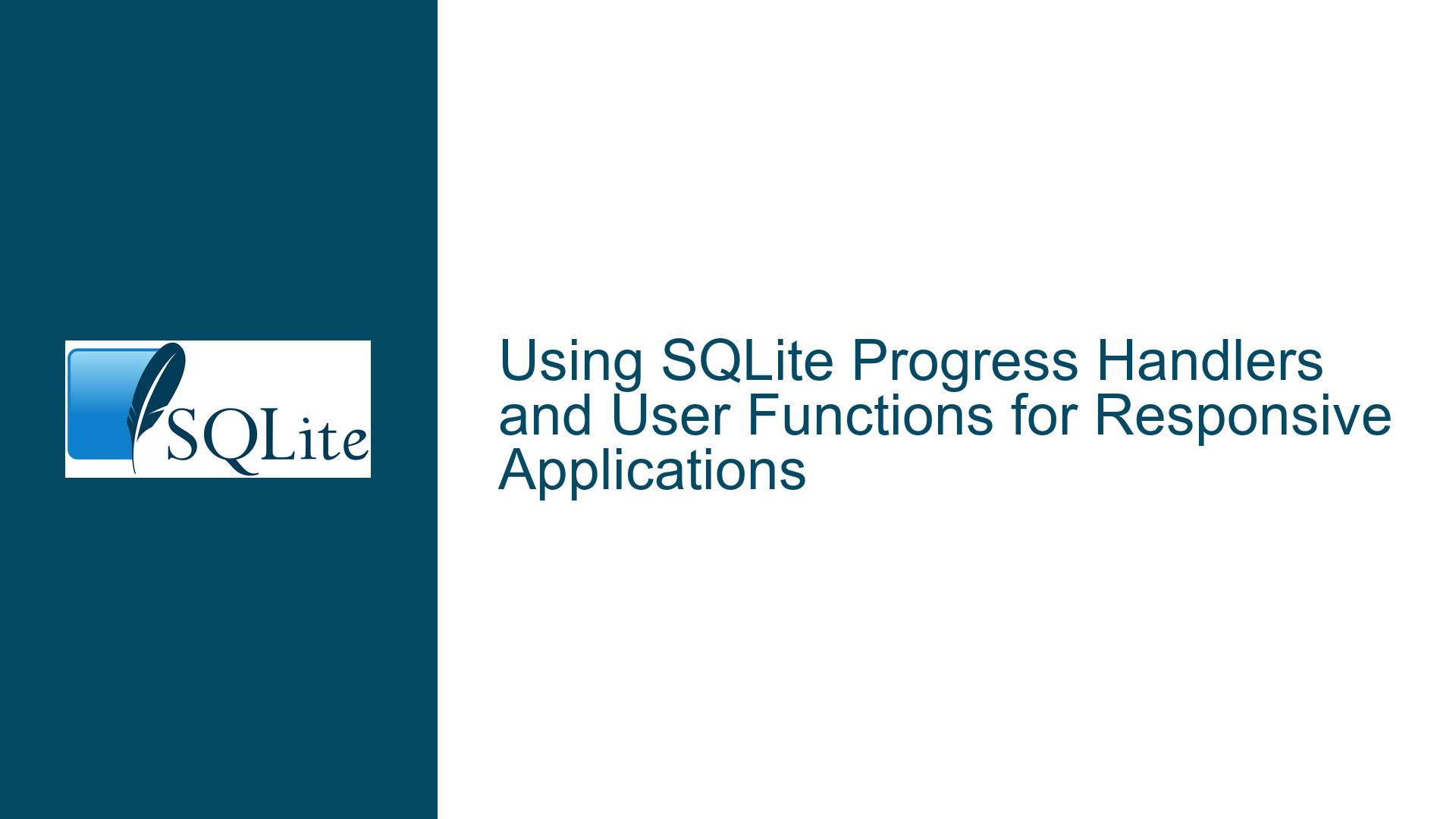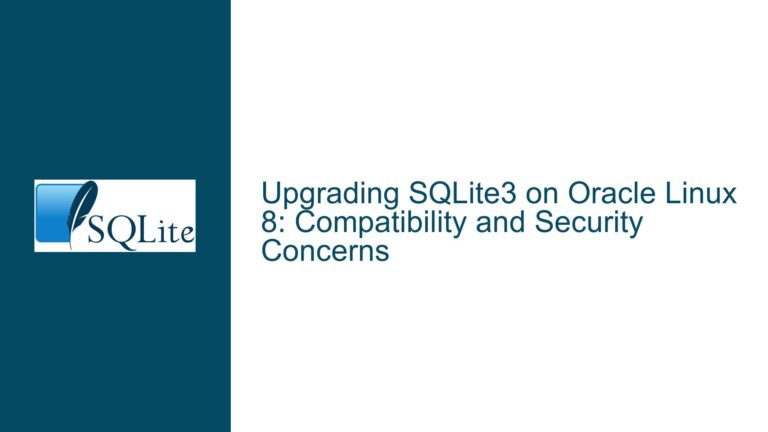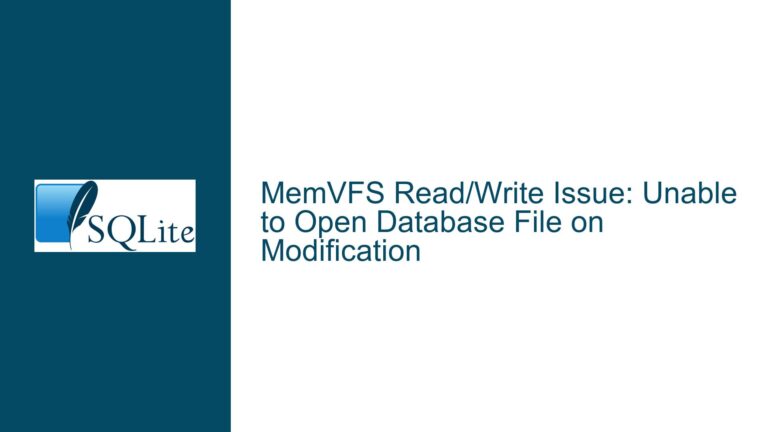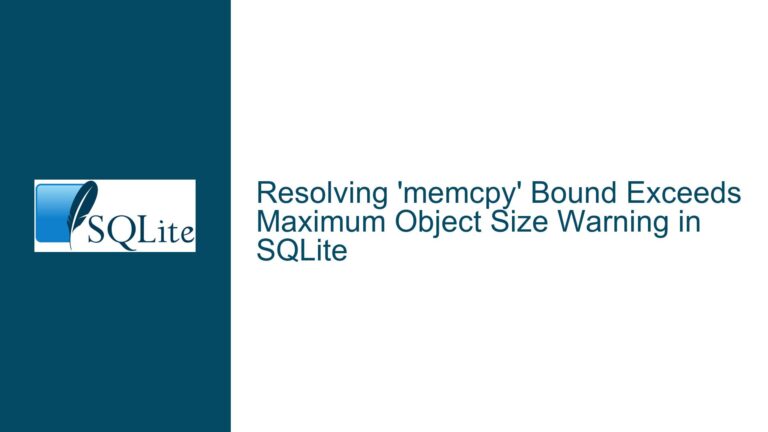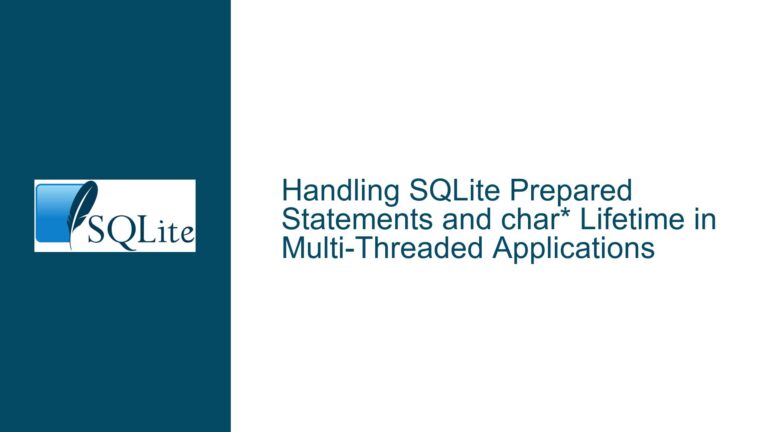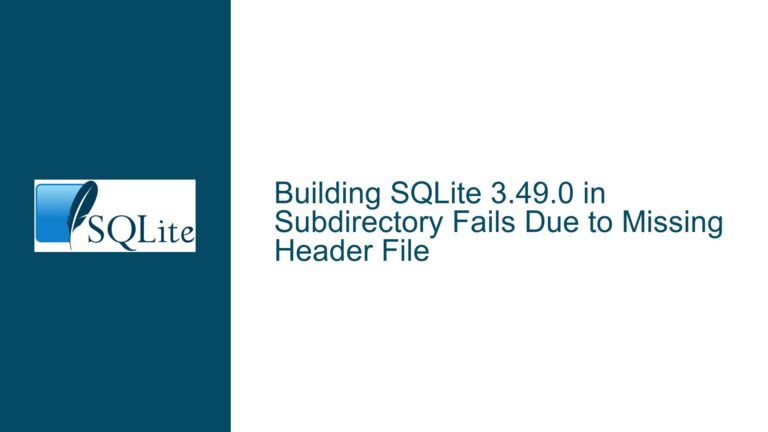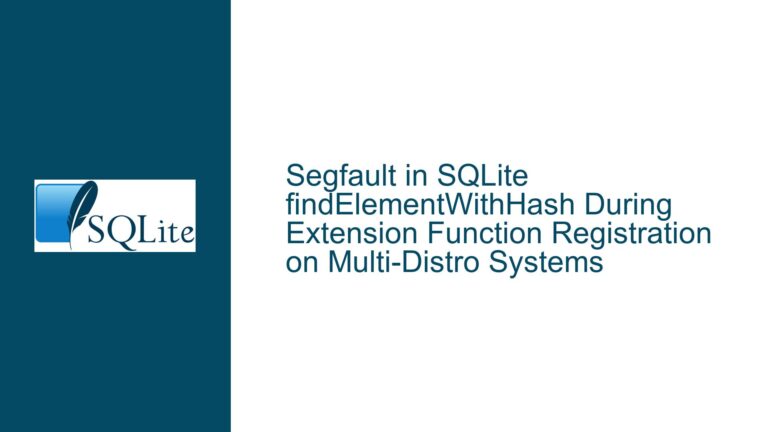Using SQLite Progress Handlers and User Functions for Responsive Applications
Progress Handler Limitations in User-Defined Functions
When developing applications that interact with SQLite databases, responsiveness is often a critical requirement. This is especially true when user-defined functions (UDFs) are involved, as these functions may perform operations that take a significant amount of time, such as waiting for a condition to be met or introducing a delay. The challenge arises when developers attempt to maintain application responsiveness during the execution of these UDFs. One approach that might seem intuitive is to leverage SQLite’s progress handler mechanism within the UDF itself. However, this approach is fraught with limitations and potential pitfalls.
The progress handler in SQLite is designed to be called after every N virtual machine instructions during the execution of a query. Its primary purpose is to allow the application to monitor the progress of long-running queries and potentially interrupt them if necessary. The handler is registered using the sqlite3_progress_handler function and is invoked by SQLite internally, not by the application directly. This design means that the progress handler is tightly coupled with the query execution context and is not intended to be called directly from within a UDF.
One of the key limitations of the progress handler is that it cannot modify the database connection or perform any operations that would alter the state of the database. This restriction is in place to ensure that the handler does not interfere with the ongoing query execution. When a UDF attempts to call the progress handler directly, it essentially bypasses the intended use case of the handler, leading to undefined behavior. Moreover, the progress handler is registered on a per-connection basis, meaning that there can only be one progress handler active for a given database connection at any time. This "Highlander restriction" complicates the scenario where multiple UDFs or different parts of the application might need to interact with the progress handler.
Interrupting Queries and Managing Progress Handlers
Given the limitations of directly invoking the progress handler from within a UDF, developers must explore alternative mechanisms to achieve responsiveness. One such mechanism is the sqlite3_interrupt function, which allows the application to interrupt the execution of a query on a specific database connection. This function can be called from any part of the application, including UDFs, and it will immediately terminate the currently running query. However, this approach is somewhat blunt, as it does not provide the fine-grained control that a progress handler might offer.
Another approach involves using recursive common table expressions (CTEs) to simulate a progress check mechanism. For example, a CTE like WITH X AS (SELECT 0 UNION ALL SELECT 0 FROM X) SELECT 0 FROM X; can be prepared and stepped through periodically within the UDF to check for interrupts. While this method can work, it is considered messy and inefficient, as it involves executing additional SQL statements that do not contribute to the actual task at hand.
The core issue here is that SQLite does not provide a direct way to retrieve the currently registered progress handler for a given database connection. This means that if a UDF needs to interact with the progress handler, the application must maintain its own tracking mechanism to store and retrieve the handler. This adds complexity to the application, as it requires careful management of the handler’s lifecycle and ensures that the correct handler is invoked at the right time.
Implementing Custom Progress Monitoring in User-Defined Functions
To address the challenges of maintaining application responsiveness while executing UDFs, developers can implement a custom progress monitoring mechanism. This involves creating a global or application-level registry to track progress handlers associated with specific database connections. When a UDF needs to check for progress or interrupt conditions, it can query this registry to retrieve the appropriate handler and invoke it as needed.
The first step in implementing this solution is to define a data structure that maps database connections to their respective progress handlers. This can be done using a hash table or a similar data structure that allows for efficient lookups. Each time a progress handler is registered using sqlite3_progress_handler, the application should update this registry to store the handler along with the corresponding database connection.
Within the UDF, the application can then retrieve the progress handler from the registry using the database connection object as the key. Once the handler is retrieved, the UDF can call it directly to check for progress or interrupt conditions. It is important to note that the handler should be invoked in a way that respects the restrictions imposed by SQLite, such as avoiding any modifications to the database connection.
To ensure that the custom progress monitoring mechanism works correctly, developers must also handle edge cases, such as when a database connection is closed or when a new progress handler is registered. In these scenarios, the registry should be updated to reflect the changes, and any stale entries should be removed to prevent memory leaks or incorrect behavior.
In conclusion, while SQLite’s progress handler mechanism is not directly usable within UDFs, developers can implement custom solutions to achieve similar functionality. By maintaining a registry of progress handlers and carefully managing their lifecycle, applications can remain responsive even during the execution of long-running UDFs. This approach requires additional effort and complexity but provides a robust solution to a common problem in SQLite-based applications.
